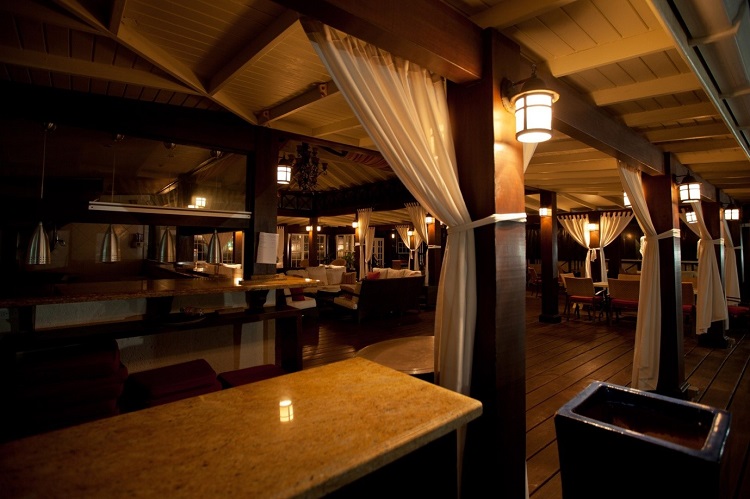How do you want people to feel when they enter your restaurant? Depending on the type of restaurant you have, you may want people to feel comfortable and cozy. If you’ve got a fast-moving restaurant with a high turnover rate, you may want people to feel excited and energetic.
Perhaps no single element of your dining establishment has a bigger impact on how people feel than the restaurant lighting. You can design a great restaurant with fantastic food, but if the lighting is off, the entire vibe of the restaurant will be thrown off as well. If you’ve ever sat down for a romantic date in a restaurant that was way too bright, you know how important it is to set the right mood with lighting.
Whether you’re renovating your existing restaurant, getting ready to open a brand new restaurant, or just thinking about the nuances of restaurant lighting, this article can help you make smart decisions about lighting.
In the article below, you’ll find tips and recommendations for how to approach restaurant lighting. Read on so you’re able to create the ideal environment in your dining establishment.
Think About How Lighting Temperature Affects Customers
When you’re thinking about your restaurant interior design, be sure to consider lighting temperature as part of your overall design strategy.
Lighting can either be cool or warm. Cool lighting is usually white or blue, while warm lighting more resembles the type of light emitted by a fire.
Both cool lighting and warm lighting can be either bright or dim. But the temperature of the lighting will change the entire mood of the room it’s in.
For example, dim blue interior lighting is great for a modern cocktail bar. It makes the place seem hip, subtle, and seductive.
Bright white lights, on the other hand, create a far less inviting environment. You may want to use bright white lights in a fast-food restaurant or anywhere where you want people to come and go quickly. For some examples of cool restaurant lighting, click here.
Warm lighting tends to create a more cozy, romantic environment. Dim yellow lights are great for classy dinner restaurants that host a lot of date nights. Brighter warm restaurant lights help create energy in your restaurant while fostering a welcoming atmosphere.
Make Your Lighting Is a Part of Your Design Plan From the Start
It’s a lot easier to create a seamless design when you think about lighting from the get-go. Don’t make any decisions about materials, wallpaper, or table setup until you’ve first thought about what kind of lighting will be shining on each of these elements.
If you don’t think about lighting while planning the layout of your restaurant, you may be stuck with lighting that feels off because it doesn’t match the layout or materials used in the restaurant. In a nightmare scenario, you may have to re-do the entire layout of the restaurant after you realize that the lighting simply doesn’t work with the restaurant interior design.
Don’t Settle For One Type Of Lighting
You may be tempted to choose the first lighting fixture that catches your eye and install it throughout the establishment as your main source of light. However, it’s important to consider the three different types of lighting that should be a part of every restaurant: ambient lighting, accent lighting, and task lighting.
Ambient lighting is your primary lighting source. If you love a fixture, make it your ambient light source. Accent lighting is used to highlight certain areas of the restaurant, such as the bar or the art on the walls.
Task lighting is the least stylish type of lighting. Task lighting is for the kitchen host stand; it’s meant to provide light for people while they’re working. Be sure to consider all three types of lighting when choosing different lighting fixtures.
Make Sure Your Lighting Is Adjustable
This last point is important for restaurants that serve all three meals. While it’s perfectly normal to have dim lighting at dinner time, it’s rare to see a dimly lit breakfast spot. In general, breakfast restaurants are brightly lit, perhaps even by natural light coming through the windows.
For lunch, you may want to turn the lights down a little bit, and then turn them down even more for dinner. If your restaurant does serve all three meals, there are two different ways to make sure your restaurant has adjustable lighting.
Your first option is to set up multiple lighting fixtures so that you can turn on your bright lights during the day, then turn them off and turn on your dim lights at night. The second option is the purchase lights with dimmers that you can adjust as the day goes on.
Installing the Right Restaurant Lighting Can Make All the Difference
Restaurant renovations are a massive undertaking, and it’s difficult to change the final product once the renovation team is done with their work. That’s why it’s so important to think about your restaurant lighting options during the early stages of the renovation process. The same is true if you’re building the interior of a brand new restaurant.
If you’re interested in learning more about interior design and other design recommendations, be sure to stay up to date with all the latest blogs posted on our website.










